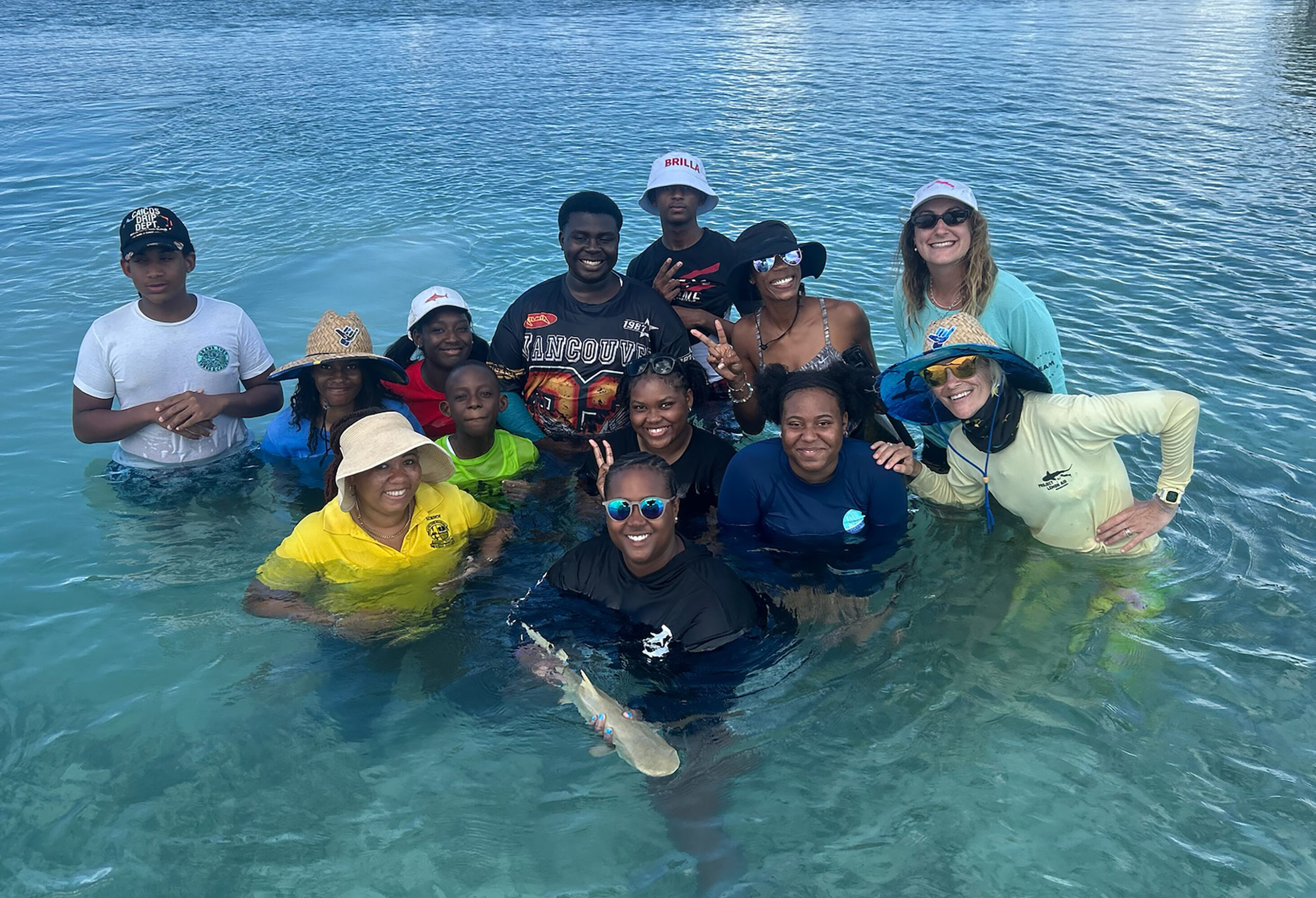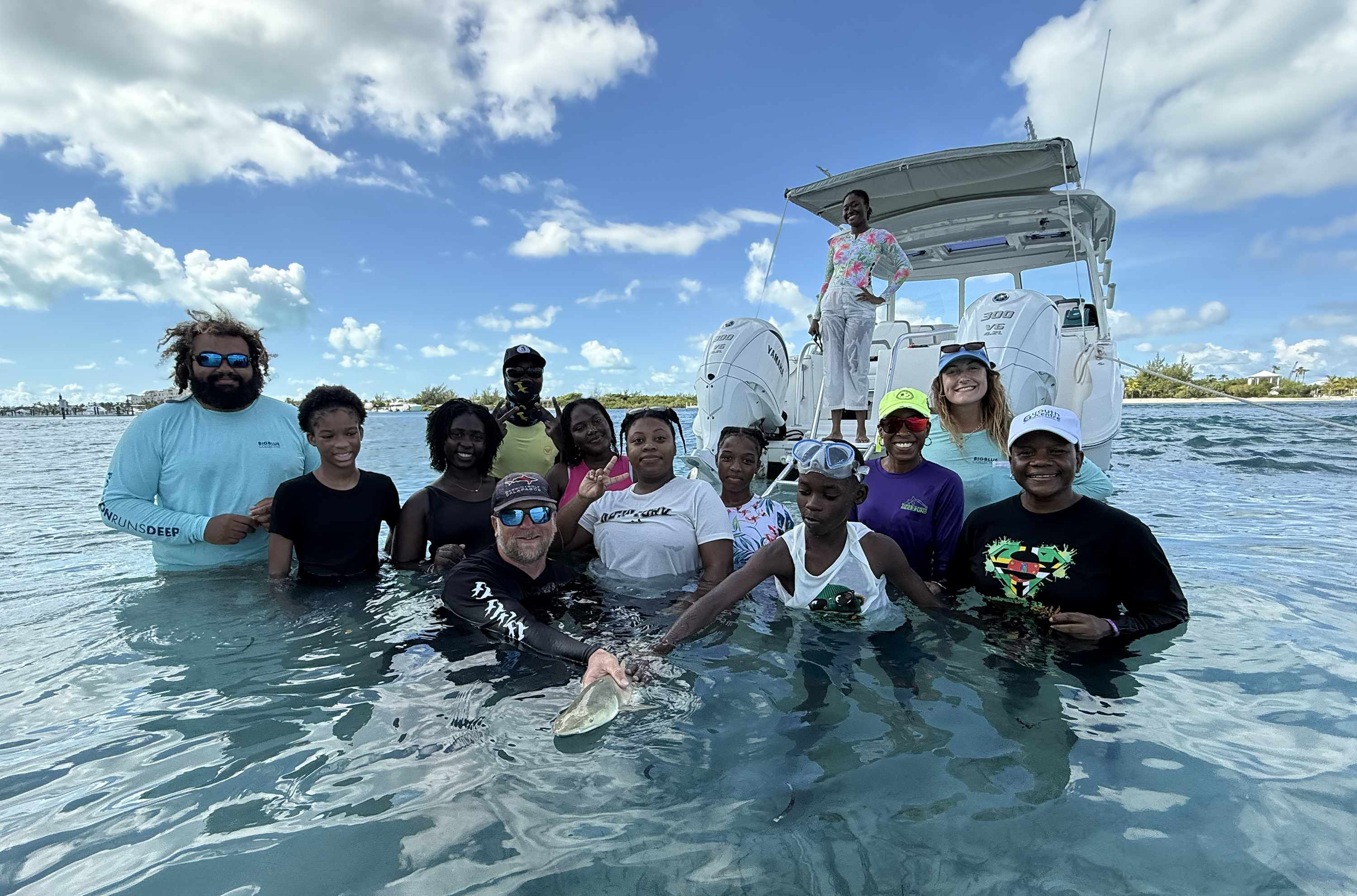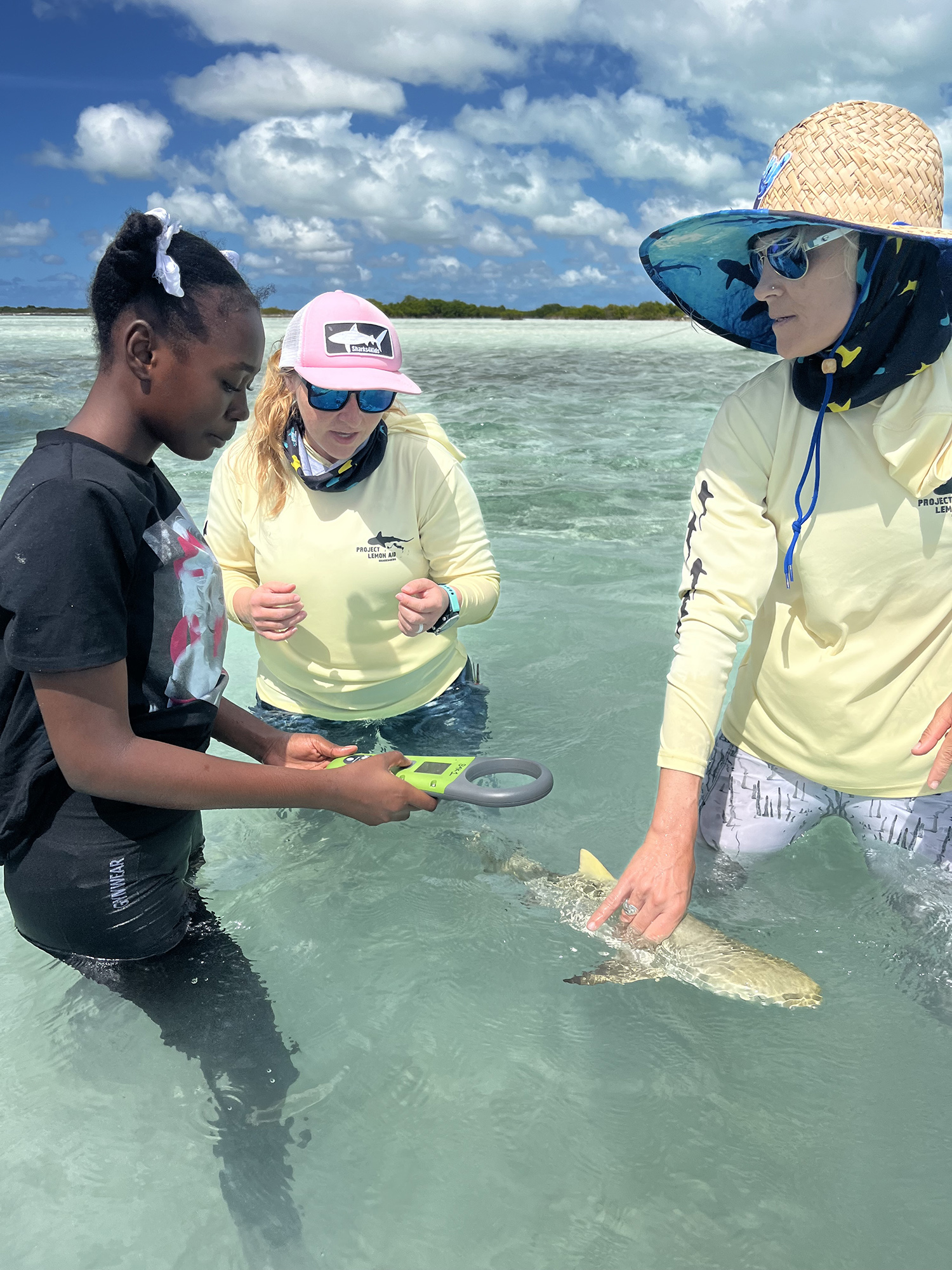The Impact of Shark Science for Students
I grew up in a small town in Maine and still remember the one person who visited our school to talk about animals — a man with bats. I don’t remember his name or what organisation he worked for, but I remember how incredible it was to see those bats up close and learn about them. My Girl Scout troop also went on a seal watch, and I can still recall the excitement of seeing seals around the Maine coast. I might not remember every tiny detail, but those moments made an impact. They opened my eyes to the natural world and inspired curiosity that would shape my future. It’s remarkable to come full circle and now be able to create these same kinds of moments for students.
From its inception, Project Lemon Aid has been centred around bringing students into the field. As a marine biologist and the founder of Sharks4Kids, I’m passionate about creating opportunities for students to experience the ocean and science firsthand. These hands-on experiences create meaningful connections that can last a lifetime. For more than a decade, I’ve seen the power of these moments — students walk away not only with a deeper understanding of sharks and marine ecosystems but also with a sense of stewardship that inspires them to take action.

Students in the field. Photo © Ali Oudman
During our Project Lemon Aid 2025 field seasons in May and October, our team hosted seven student field trips. In May, we took 31 students and teachers from Clement Howell High School, British West Indies Collegiate, and A. Louise Garland High School into the field. Students learned about the importance of island ecosystems, especially mangroves, as well as shark biology, ecology, and our research methods. They helped set lines, deploy BRUVs, and collect data — gaining an authentic understanding of what marine research entails. The highlight for many was assisting with the data collection during scientific workups, where they helped measure the sharks, collect DNA samples, determine sex, and assess umbilical scar status in lemon sharks.

Photo © Bailey Stefanie
We also explored a new site where we caught four blacktip sharks. While not our focus species, encounters like these help us better understand habitat use and species interactions. The students were thrilled to see a different species — one many had never heard of before — adding another layer of discovery to their learning experience.

Photo © Duncan Brake
In October, we returned to the island and hosted three additional student trips. Once again, we were joined by students from Clement Howell High School and British West Indies Collegiate, and we also welcomed back students from the Edward C. Gartland Youth Centre. Among them was Grade 11 student Wilensky, who first joined us in 2022. Seeing his continued enthusiasm for the ocean was inspiring. Now a certified diver, he hopes to join us as an intern in May 2026 to gain even more experience.

Photo © Jillian Morris
We’ve partnered with the Youth Centre since our first visit in 2019, and we’re proud to continue supporting their efforts to engage and empower young people in the community. In total, 24 students and three educators participated in our October field trips.
We were also joined by community members during the student days, including Destiny Missick, Scientific Officer for the Department of Fisheries and Marine Resources Management, and Luis Serpas, DECR National Park Facilities Manager. Community involvement has always been the foundation of this project. Conservation only works when it includes local voices, values, and perspectives. Ensuring that stakeholders are part of the process not only supports long-term sustainability but also strengthens the connection between people and the ecosystems that sustain them.

Photo © Jillian Morris
Island nations like the Turks and Caicos are deeply tied to the ocean — economically, culturally, and ecologically. Ensuring that young people have access to the sea and understand its importance is vital for the future of both communities and conservation. When students can experience sharks and marine ecosystems firsthand, they develop a more profound respect for these environments and recognise how protecting them supports local livelihoods, tourism, and food security. Empowering island students to explore, understand, and preserve their ocean heritage helps build the next generation of marine leaders and conservation advocates — ensuring that these incredible ecosystems can thrive for years to come.

Photo © Jillian Morris
